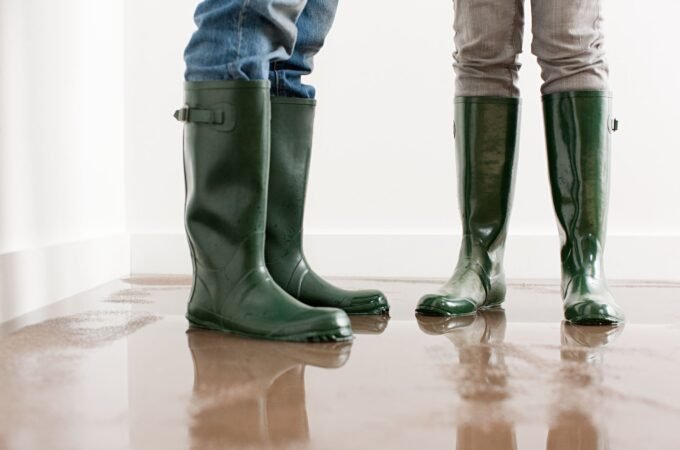
The Ultimate Guide to Seasonal Outdoor Furniture Maintenance
As the seasons alter, so do the needs of your outdoor residing areas. Appropriately keeping up outdoor furnishings confirms its longevity and retains your garden, patio, or porch searching beautiful throughout the year. Amongst the myriad of outdoor furnishings alternatives, Kingsley Bate Furniture stands apart for its quality and sturdiness, providing pieces that can withstand the elements while preserving their sophistication and relaxation.
Yet, even the best furnishings necessitates consistent care. In this ultimate manual, we’ll examine the basics of seasonal outdoor furnishings maintenance, ensuring your investment remains in an ideal situation. From cleansing cushions and dealing with spots to protecting wooden and securing covers, this information will arm you with the equipment to hold your outdoor residing areas, trying their very best all year long.
Table of Contents
TogglePreparing for Spring: Awakening Your Outdoor Space
As winter thaws into spring, it is essential to get your outdoor area ready for enjoyable evenings spent outdoors in the coming warmer months. Start by carefully examining each piece of furniture you have stored away during the colder season. Inspect for any harm or wear that may have happened while outside furnishings were not in use.
Wooden furnishings like teak, a material often found in Kingsley Bate collections, should be looked at for signs of discoloration, mold, or small splinters forming. Metal objects need to be checked for rust spots forming or paint flaking away. Wicker items and textiles require scrutiny for indications of mold, mildew growing, or tears developing. By taking the time to review each item now closely, you can make any needed repairs or plan to replace what is damaged before the nice weather arrives, so your patio or deck is perfectly prepared for relaxing in style outside as spring blossoms. It’s essential to clean all surfaces as the next step thoroughly.
Begin by gently brushing away any loose particles and grime from everywhere. Wood furniture is best cared for through soft brushing and a blend of delicate soap and water. Do not employ harsh chemicals since they could deplete the natural oils in the wood. Once cleaning is complete, allow the wood to fully dry in direct sunlight. For metal accents, apply soapy water and a sponge to wipe down areas, and think about putting on a protective layer of wax or paint to inhibit rusting. Textile cushions and upholstery demand laundering as directed by the maker or mild fabric cleaner.
Summer: Regular Maintenance for Enduring Beauty
Summer is the outdoor living season, and regular maintenance will keep your furniture looking its best. Sunlight can be particularly damaging, causing fading and weakening of materials. Store cushions and fabric elements indoors when not in use, or invest in furniture covers to protect them from direct sunlight and summer storms. For wood furniture, a mid-season clean can help remove any grime build-up. Reapply a protective sealant or oil, explicitly recommended for the type of wood, to guard against the sun’s drying effects and enhance the wood’s natural color.
Giving metal and wicker furniture a brief wipe with a damp cloth after use can easily remove any accumulated dust and prevent excess buildup over time. It’s an excellent idea to carefully inspect the structural soundness of all furniture pieces, tightening any screws that have loosened and replacing any compromised parts before further usage. This maintenance session also provides an excellent opportunity to refresh fading paint or apply a protective rust preventer to metal surfaces. Taking these small steps now can help furniture retain its vibrancy and integrity while shielding it from rust formation, all without much effort.
Transitioning into Autumn: Preparing for the Cooler Months
With the shortening days and falling temperatures signaling the shift to colder weather, taking steps to ready your outdoor furnishings is prudent. Start the process by thoroughly washing all pieces using similar methods to those in springtime. This thorough cleaning will sweep away any lingering summer debris like pollen grains, bird waste, or caked-on grime that may have built up over warmer months. Giving items a good scrub now makes the transition to storing them much easier later. Be sure to pay close attention to nooks and crannies where residues tend to collect. Once clean, protection from impending weather events becomes the next priority.
Protecting teak or other wood furniture against damp weather requires resealing or indoor storage. Those in very cold or wet climates should consider storing pieces inside or in dry structures like sheds to prevent damage from moisture, leaves, or frost. While sealing once more with a quality product can help safeguard furniture left outside, covering it with breathable covers offers an alternative if space is scarce. Covers allow furniture to withstand conditions outdoors yet still receive protection from elements that could otherwise compromise the wood over winter. For any furniture valued and meant to last, taking proactive steps to shelter it seems wise given the impending change in seasons.
Winterizing: The Final Step in Seasonal Care
As the colder months draw near, it is important to make sure any furniture left outdoors is properly prepared for the winter weather ahead. All outdoor pieces, such as patio tables and chairs, should be thoroughly dried and cleaned to remove any moisture before being covered or placed in storage. This simple step will help reduce the chance of mold or mildew forming while the items sit unused during the off-season. When securing protective covers on furniture, be sure to fasten them tightly so they do not blow away in strong winter winds. However, leaving covers slightly loose or propped open a small amount will allow air to circulate underneath and prevent condensation buildup. Proper preparation of outdoor furnishings now will protect their condition until nicer weather returns once more.
If you’re using a storage area, carefully stacking a reasonable number of chairs and taking apart tables can help save room and shield them from harm. However, be cautious of piling too many things on top of the other, as an excessive burden can induce warping or splitting, particularly in furniture made of wood. Stacking furniture in a storage space can help make the most of available space while keeping items protected. But take care not to overload stacked items, as too much weight risks damaging furniture over time through bending or cracking, especially for pieces constructed from wood.
Conclusion
While outdoor furniture is designed to withstand the elements, taking some basic precautions can help protect your investment and keep pieces in great shape for many years. From stately teak dining sets to colorful accent pillows, a few minutes of seasonal upkeep goes a long way. Whether enjoying leisurely summer evenings or cozy winter afternoons by the fire, your patio or garden area will provide comfort and visual delight as long as you observe these practical care strategies.
Simple cleaning and protecting steps will shield furniture from damage due to rain, snow, and UV rays. Wiping down surfaces, covering or storing pieces appropriately, and applying protective spray or sealant maintains the lush appearance of woven materials and sealed wood. Inspecting for wear and repairing or resealing as needed guards against cracking or splitting. With a small amount of seasonal maintenance, your outdoor oasis will serve as a welcoming retreat no matter what the weather may bring.
Originally from the U.S, Rana Tarakji is an SEO Analyst, the founder of One SEO, a multinational link building company, and the author of “Off-site SEO Guide: A Hands-on SEO Tutorial for Beginners & Dummies”, and a web content specialist who now lives in Beirut, Lebanon. Rana’s work has been published in many print and online magazines and newspapers, such as Entrepreneur, Life Hacker, Upwork, Christian Today, and many more.





